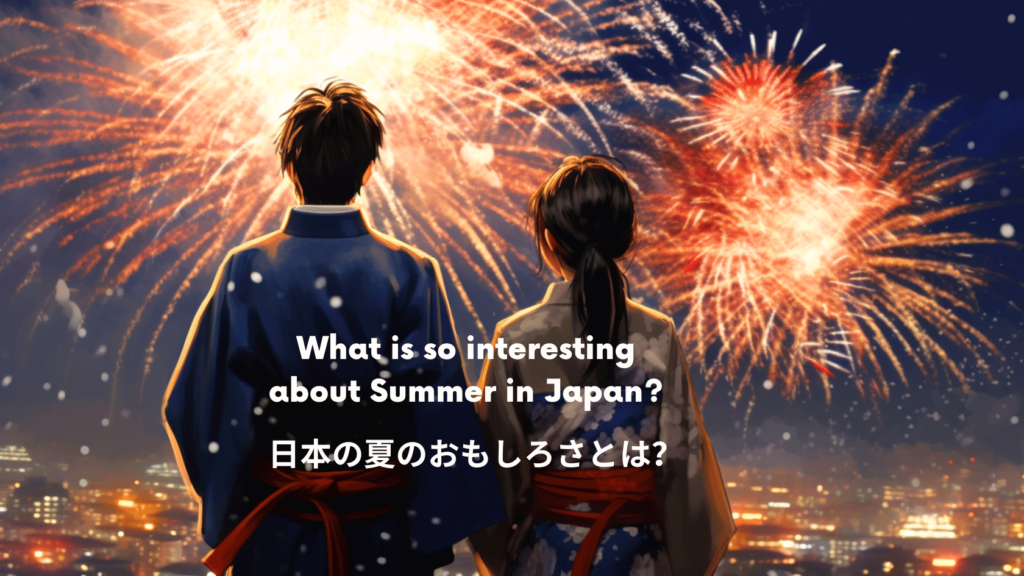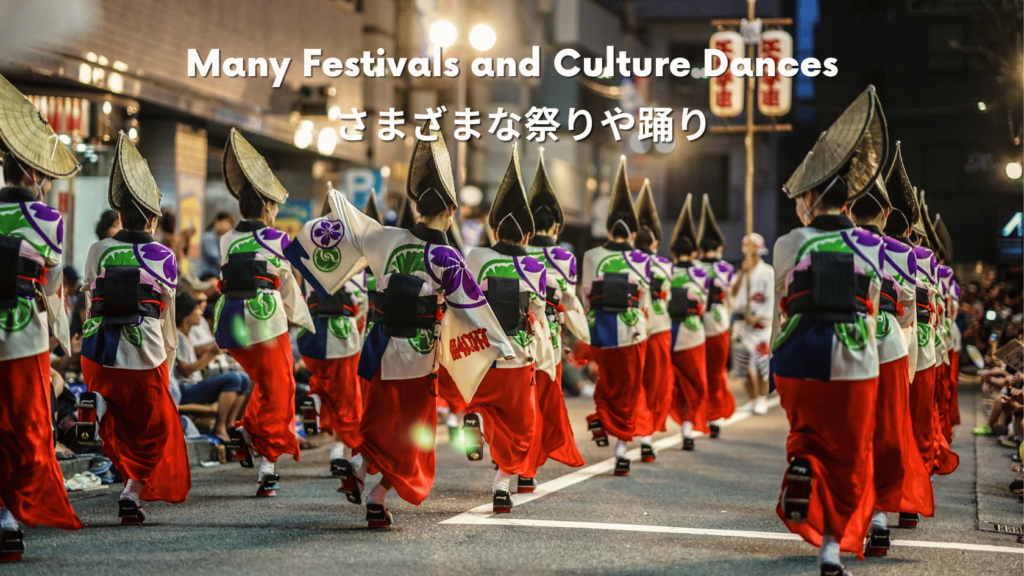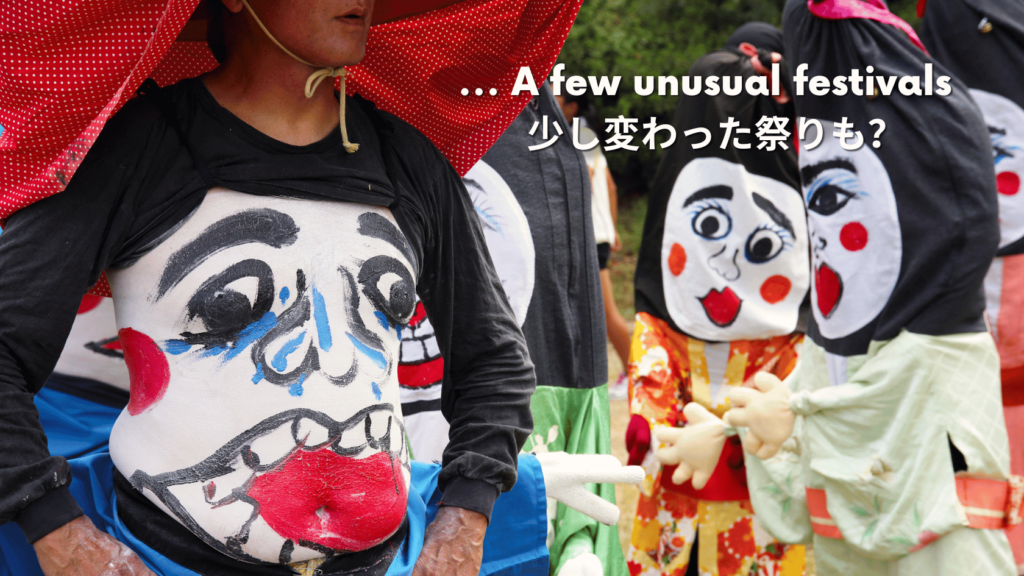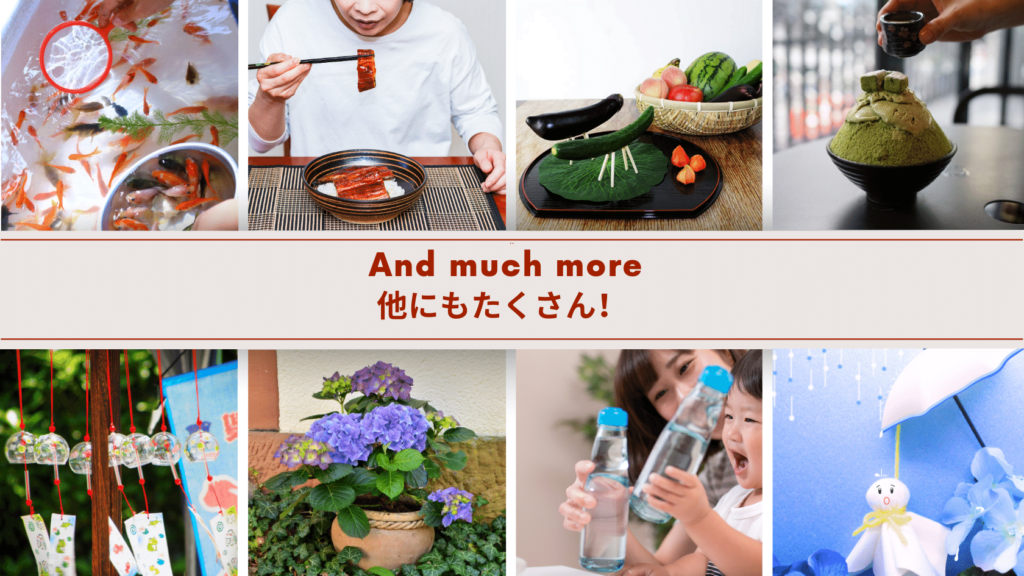Author: Mizuki Ichihira & Valeria Japanese Summer words
When reading on a smartphone, we recommend turning the screen to landscape mode.
In this article, we will unveil the beauty of the summer season in Japan with a collection of Japanese Summer words. This is the season known for the high humidity, rainy period, summer Japanese festivals, bathing in the sea, and much more!
We will discuss the customary elements encountered at Japanese Summer festivals, including the prominent Obon, as well as the seasonal foods, flowers, traditional artifacts, helpful adjectives, and vocabulary to depict the hottest season.
13 fun Japanese Summer words to learn now:
夏 ・Natsu | Summer
Foremost, the Japanese word for Summer is Natsu | 夏 ・なつ. However, that's not all. We can actually generate new words by combining the very kanji character representing summer, "夏," let's explore a few examples:
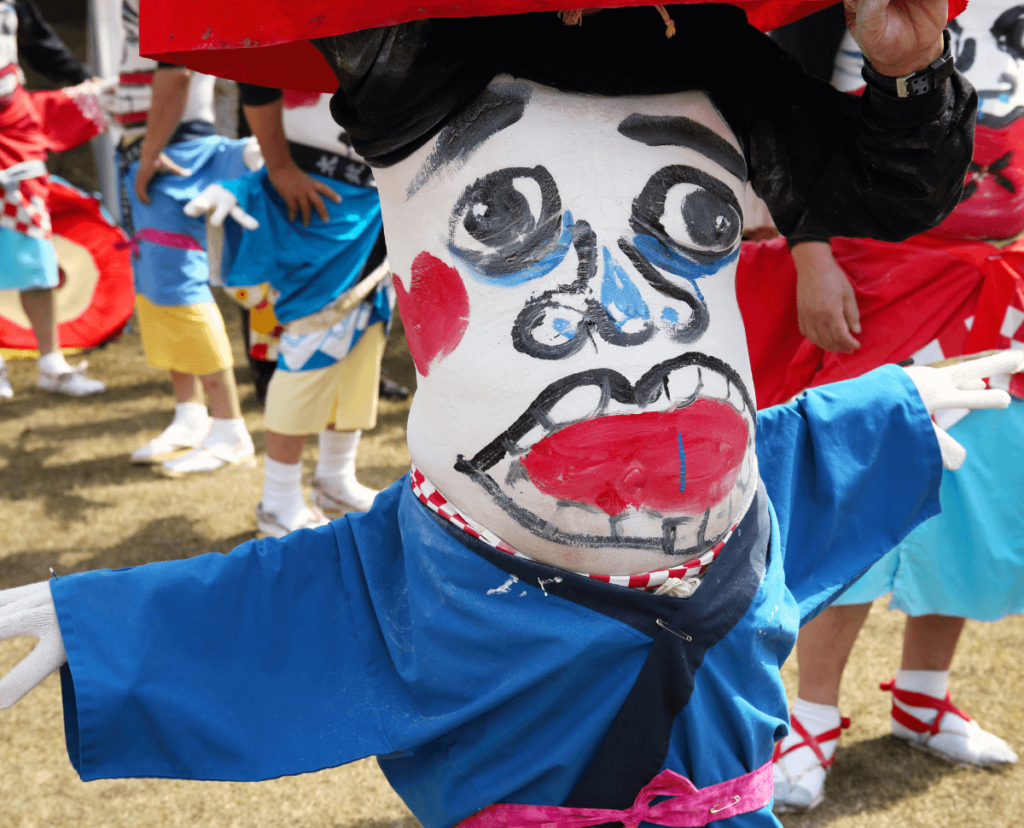
| Japanese Word/Kanji | Romaji | English Translation |
| 夏休み | Natsuyasumi | Summer vacations |
| 真夏 | Manatsu | The middle of summer |
| 夏ばて | Natsubate | Summer fatigue - exhausted and without energy. Combat it with 鰻 - Unagi (eel) and seaweeds - boost stamina and strength! |
| 夏祭り | Natsumatsuri | Summer festival |
As summer approaches, Japan unveils its distinctive array of festivals, among them the very unusual one, the "北海へそ祭り ・ Belly Button Festival, which is held on July 28th and 29th" Furano City, the "belly button" of Hokkaido, hosts an annual festival since 1969 to strengthen bonds. The festival centers around the "Heso (belly button) shrine," praying for love, growth, and peace. Inspired by Furano's location, dancers turn their belly buttons into faces using paint, costumes, and props. Humor plays a big role in the festival's triumphant charm.
浴衣・Yukata | The Summer Kimono
You can’t think of a summer festival without imagining a Yukata. It’s the traditional summer Kimono, lighter and informal. It’s not made of silk, but of fresh cotton, linen or hemp, ideal for summer. Women use Yukata with floral and colorful patterns, ribbons, and rose pins to their hair. Men wear darker patterns with obi (kimono belt) tied at their waist.
The kanji to write it are 浴びる・abiru, for “bathing” or “showering”, and 衣・koromo, for “robe”. Literally, it’s the “bathing cloth”, used in the onsen (traditional Japanese hot spring) after a relaxing bath!
Are you aware that Yukata has its own summer festival? Himeji is not known only for its iconic castle but also for hosting the "姫路ゆかたまつり ・ Himeji Yukata Festival" in late June. Many people in Himeji gather around to celebrate wearing Yukata, and you will get to witness a Yukata fashion show and various dance performances.
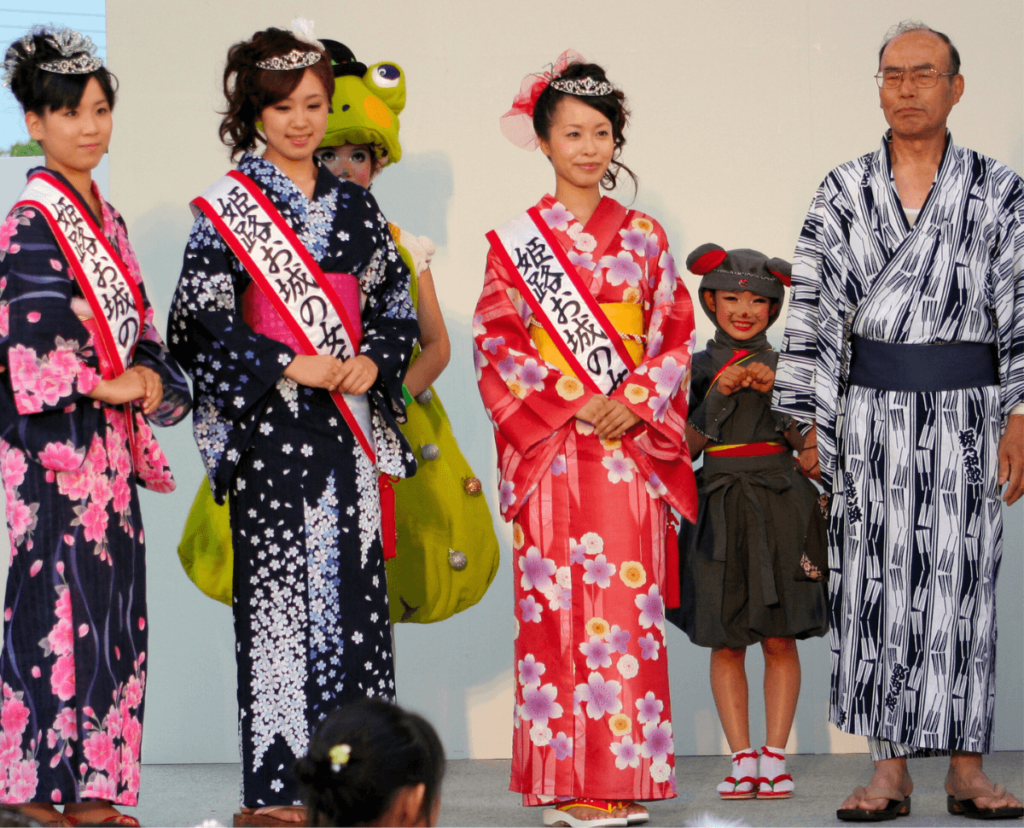
| Example: |
| 今日は夏祭りに行くので、お気に入りの浴衣を着ます。 |
| Kyō wa natsumatsuri ni iku node, okiniiri no yukata o kimasu. |
| Today, I will wear my favorite Yukata for the summer festival. |
花火・Hanabi | Fireworks
Hanabi・はなび・Fireworks are a must during Japanese summer festivals. They are a popular and crowded event. Individuals will engage in competition to secure prime viewing spots, even making advance reservations. Unlike in Western countries, where fireworks are typically associated with specific events, in Japan, there is no requirement for a special occasion to enjoy them.
To write it, use the “flower” kanji (Hana・花) together with the one for “fire” (Hi・火): they are the fire flowers indeed.
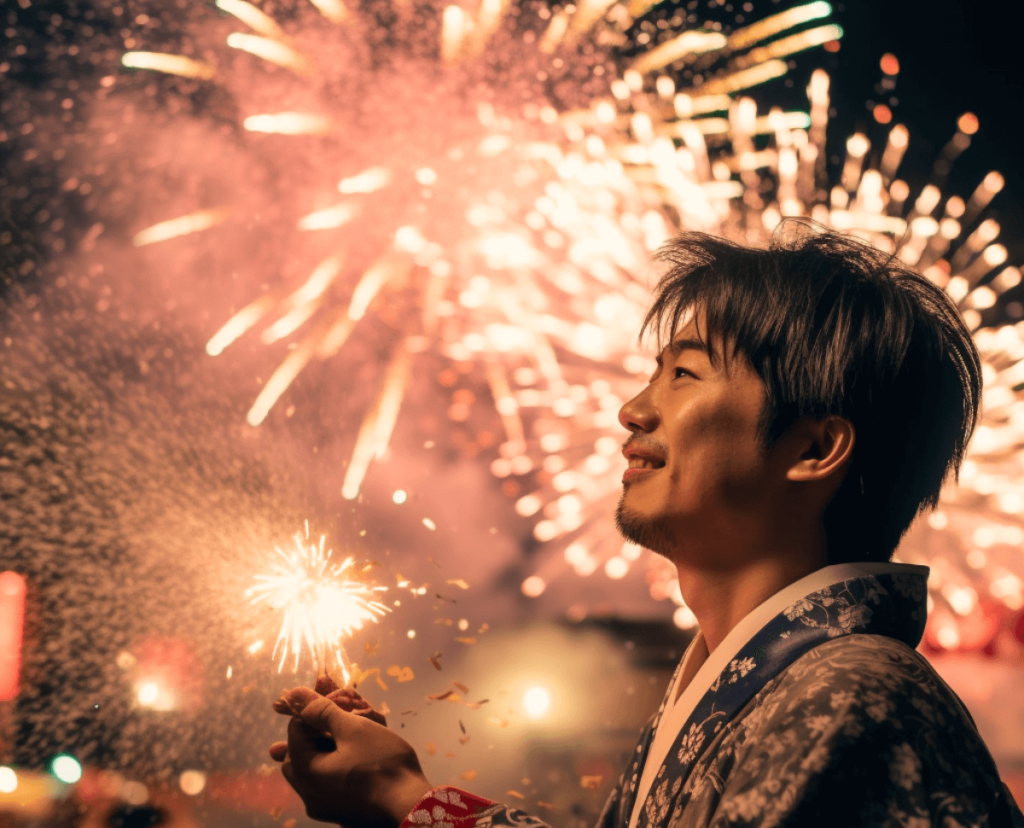
| Example: |
| 夏祭りで花火を見られるのが待ち遠しいです。 |
| Natsu matsuri de hanabi o mirareru no ga machi-dōshii desu. |
| I'm eagerly anticipating the opportunity to witness fireworks at the summer festival. |
屋台・Yatai | Drinks and Food Carts
Yatai is the stands or carts for drinks and food, another essential element during festivals. They can offer you Yakisoba (stir-fried noodles with vegetables and meat), Okonomiyaki (a Japanese-style savory pancake with chopped vegetables, meat, or seafood, following the customer’s taste), Yakitori (grilled chicken), Oden (Japanese hotpot with daikon, tofu, and fish cake), Ramen (noodles in hot soup) and much more!
The first kanji, 屋, has the meaning of “roof”. It’s used after some words to designate its shop. For example, 花 (Hana, flower) → 花屋 (Hanaya, florist). The second kanji is 台・だい, meaning “stand/pedestal.” Therefore, a “stand with a roof” is the place to eat some Japanese food!
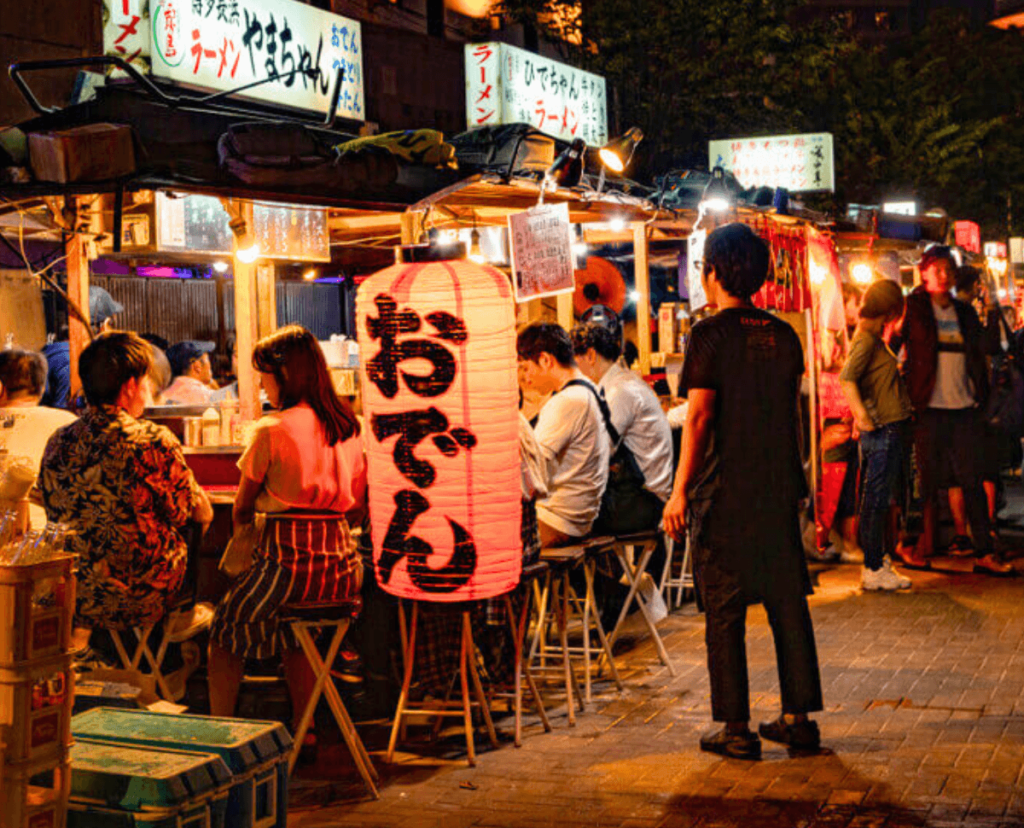
| Example: |
| 屋台に行って焼き鳥を食べましょう。 |
| Yatai ni itte yakitori o tabemashou. |
| How about we visit the drinks and food carts and indulge in some delicious Yakitori? |
金魚すくい・Kingyo sukui | Goldfish Scooping
The next Japanese summer word is Kingyo sukui (in Hiragana: きんぎょすくい), which means “goldfish scooping.” At a stall, you can try to catch a goldfish (金魚) with a net made out of paper. Nevertheless, it's not as simple as it appears. Even if you manage to catch a fish, the delicate paper net is bound to tear if not handled with care!
Participating in this activity is highly popular during Summer festivals, catering to individuals of all ages, including children, groups of friends, and couples alike!
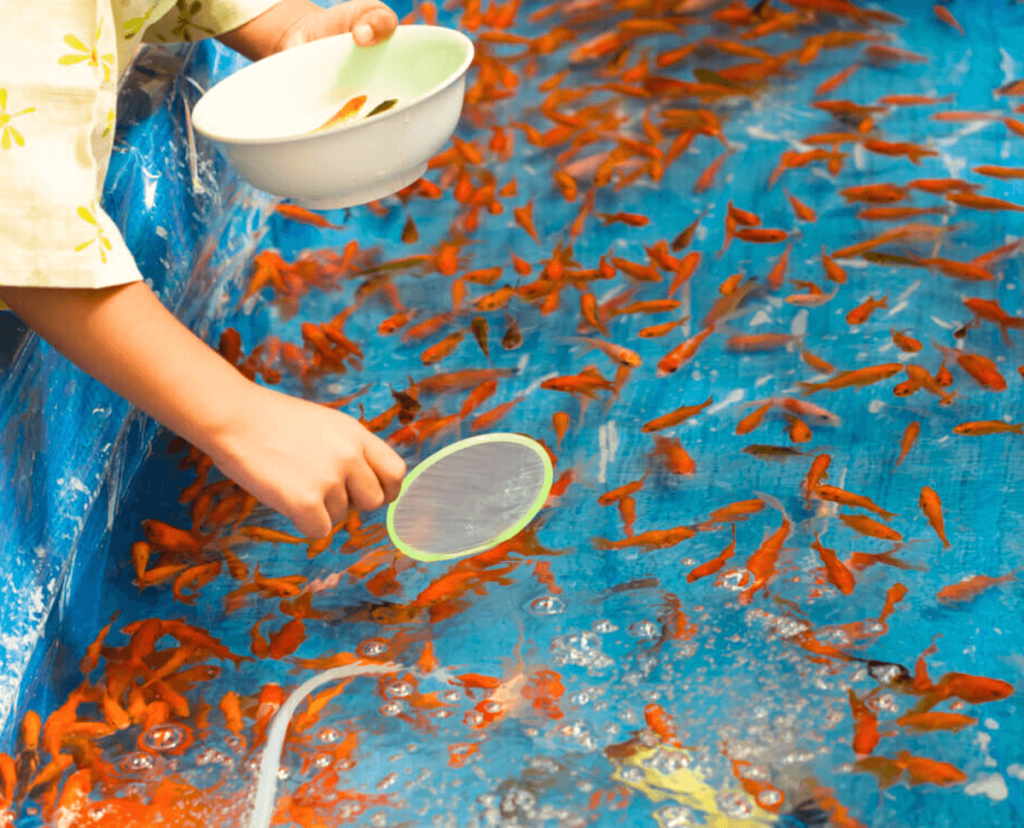
| Example: |
| 金魚すくいで金魚を2匹捕まえました。 |
| Kingyo sukui de kingyo o nihiki tsukamae mashita. |
| I caught two goldfish while playing goldfish scooping. |
お盆・Obon | Obon Festival
Obon・お盆 is one of the three most important annual events, together with New Year’s and Golden Week. It lasts 3 days, from the 13th to the 15th of August, according to the lunar calendar. However, the date can change to the middle of July, according to the solar calendar and the region.
This festival celebrates the ancestor’s souls, following Buddhist tradition. There is a belief that the spirits of the deceased return to visit their living relatives.
On the first day of the Obon, Chouchin (提灯・Japanese paper lanterns) will guide the spirits to their previous homes with their lights. On the last day, the same thing will occur, letting lanterns float in rivers to guide the spirits towards the sky. For this purpose, traditional 盆踊り・Bon Odori (Bon dances) are performed in streets, parks, and temples.
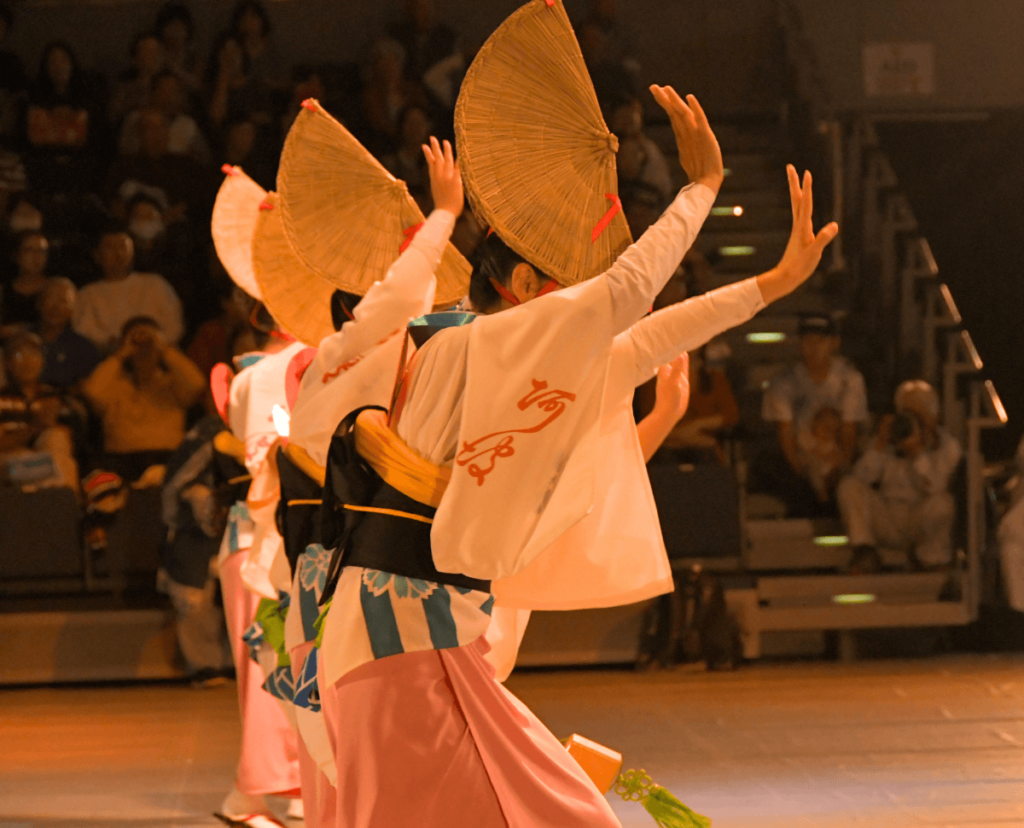
| Example: |
| 今年のお盆は家族と一緒に過ごします。 |
| Kotoshi no Obon wa kazoku to issho ni sugoshi masu. |
| This year, I will spend the Obon period with my family. |
暑い・Atsui | Hot
How do you describe Summer without the word “hot”?
Atsui is an -i ending adjective, however be careful not to confuse it with the adjective 熱い・Atsui, which has the same pronunciation and meaning, but refers to hot objects (drinks and food) or “to get enthusiastic with something”.
To gain a clearer understanding of the contrast between the two verbs, refer to the examples provided below:
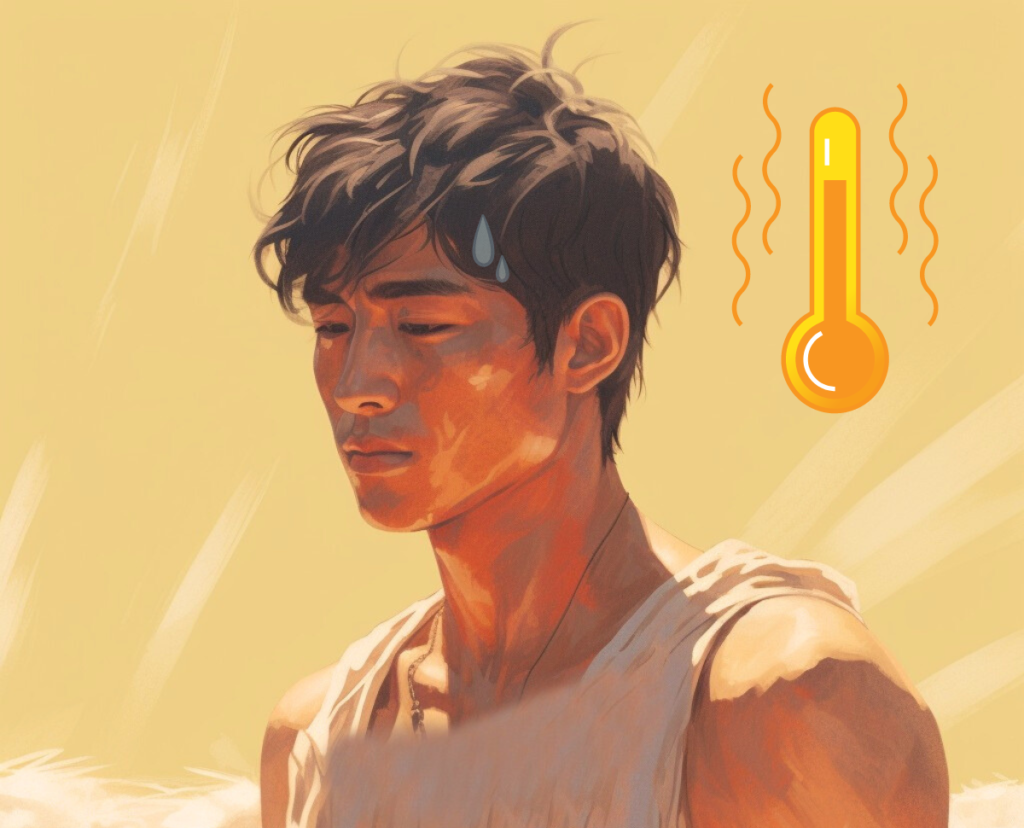
| Japanese Word/Kanji | Romaji | English Translation |
| 今日は暑いですね。 | Kyou wa atsui desune. | Today’s hot, isn’t it? |
| 昨日は暑かったですね。 | Kinou wa atsukatta desune. | Yesterday was hot, wasn’t it? |
| このお茶は熱くて飲めない。 | Kono ocha wa atsukute nomenai. | This tea is too hot, I can’t drink it. |
| このサッカーの試合は熱い。 | Kono sakka- no shiai wa atsui. | This soccer match is exciting / intense. |
梅雨・Tsuyu | Rainy Season
One of the Japanese words about Summer is also the rainy season in Japan. To write Tsuyu, use the kanji of Japanese apricot tree (Ume・梅) and the kanji for rain (ame・雨).
Since the rainy season occurs from the end of May until the beginning of July, this Japanese summer word marks the arrival of summer. This period has become part of Japanese culture since ancient times, blessing people with rain, which is fundamental for rice cultivation.
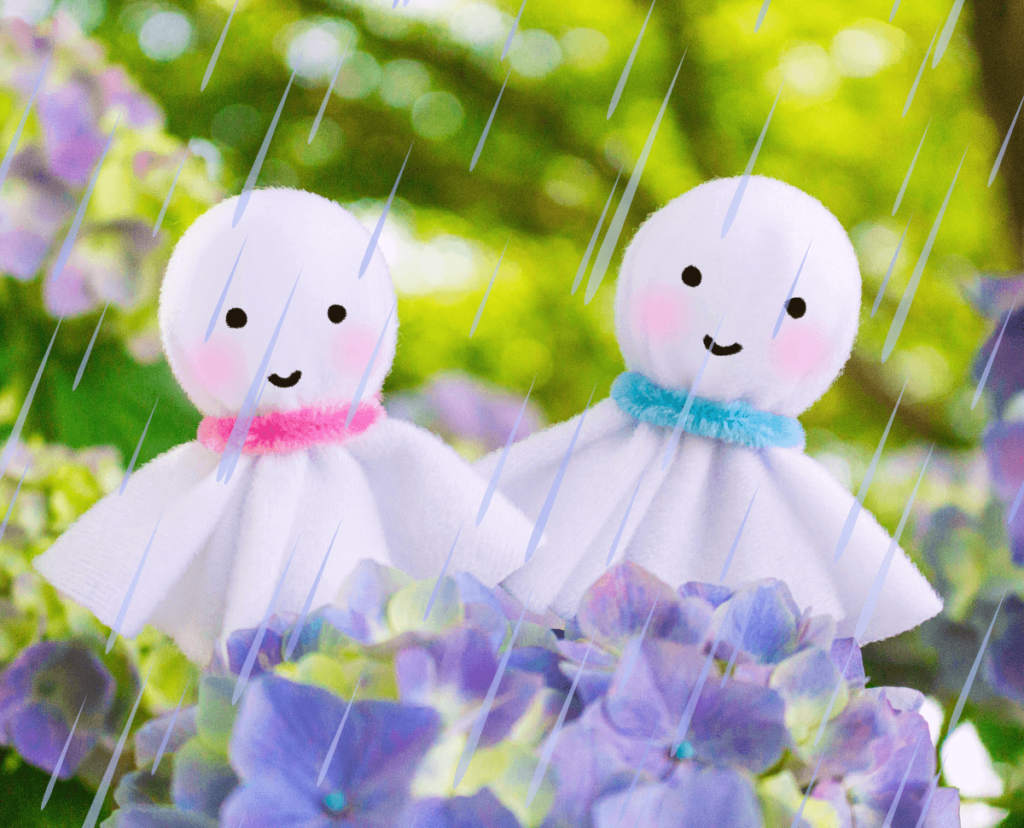
| Example: |
| 梅雨なので 毎日傘を持ち歩いています。 |
| Tsuyu nanode mainichi kasa o mochiaruite imasu. |
| Since it's rainy season, I carry an umbrella with me every day. |
紫陽花・Ajisai | Hydrangea Flower
Ajisai is the Hydrangea, believed to be a Japanese native flower, first discovered and cultivated here. In Europe, it’s also called “the rose of Japan”.
Moreover, visiting Ajisai during the rainy season is akin to witnessing the blooming of Sakura in spring.

| Example: |
| 梅雨の季節になると、紫陽花が満開になります。 |
| Tsuyu no kisetsu ni naruto, Ajisai ga mankai ni narimasu. |
| During the rainy season, hydrangeas come into full bloom. |
かき氷・Kakigoori| Japanese Shaved Ice cream
Kakigoori is the Japanese shaved ice dessert, with syrup and condensed milk on the top, to cool off during summer. Served in a bowl alongside additional toppings like red beans or fresh fruit, this dessert can be enjoyed with a spoon due to its delicate, snow-like texture!
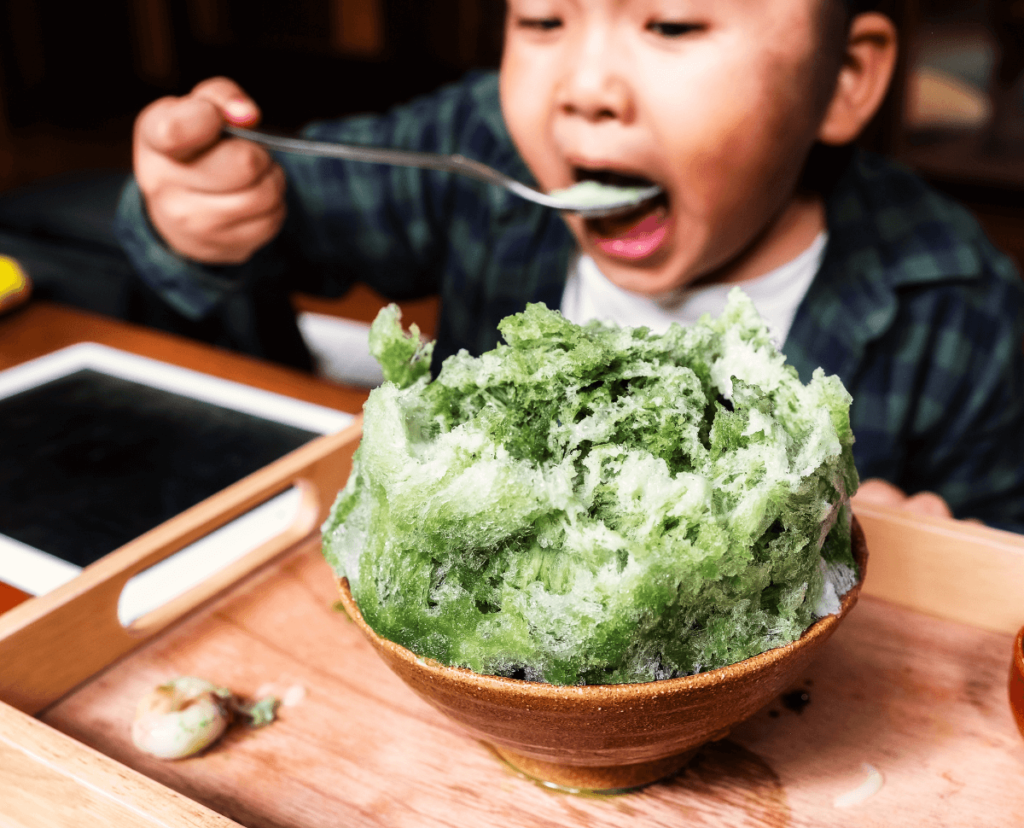
| Example: |
| 私の好きなかき氷は、抹茶にあんこをトッピングしたものです。 |
| Watashi no sukina kakigōri wa, matcha ni anko o topping shita monodesu. |
| When it comes to Kakigori, my preferred flavor is green tea with red beans as toppings. |
風鈴・Fuurin | Wind Chimes
The following is one of the most endearing Japanese summer words, these little objects are called the Fuurin, “wind chimes”. The structure is uncomplicated: it consists of a decorated glass bulb and a piece of paper. The paper will flutter in the summer breeze and ring the tiny ball inside the glass bulb. This sound, together with the cicadas sound, is the symbol of summer in Japan.
The enchanting melody produced by delicate wind chimes is honored during the "Enmusubi Wind Chime Festival" (縁結び風鈴祭り - Enmusubi Fuurin Matsuri), which takes place from July to September.
At the festival, the shrine grounds are divided into sections, offering abundant exploration opportunities. A major attraction is the Furin Komichi, a pathway adorned with numerous delicate glass bells in various vibrant colors.
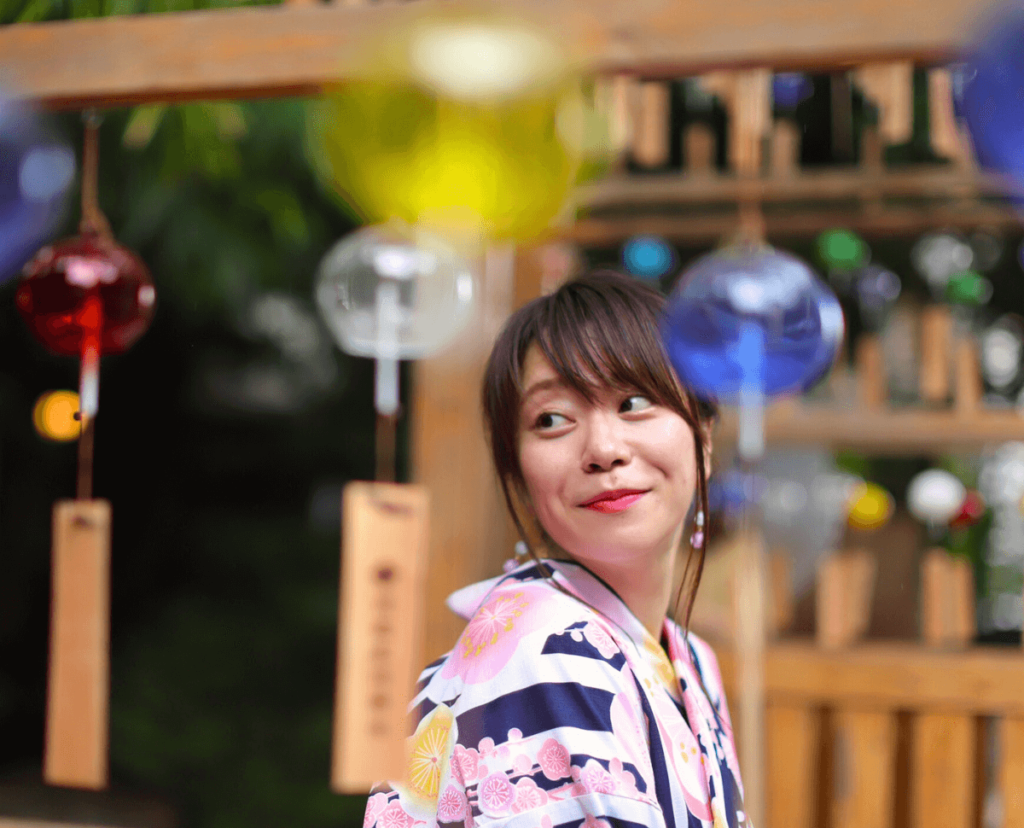
| Example: |
| 風鈴の音を聞くと、夏を感じます。 |
| Fuurin no oto o kikuto, natsu o kanjimasu. |
| When I hear wind chimes, I feel the presence of summer. |
日焼け・Hiyake | Sunburn
Hiyake is the suntan or sunburn, literally “sun” (日・ひ) and the verb “to burn” (焼く・やく). In Japan, this concept is quite different from Western countries. While in America and Europe, people try to get a beautiful tan, even with artificial methods, in Japan, women prefer white skin to tanned ones. Therefore, many UV protection goods exist, together with arms and legs covers.
It’s a tradition that goes back to the Heian period (794 to 1185), where women with light and pale skin represented beauty at the court.
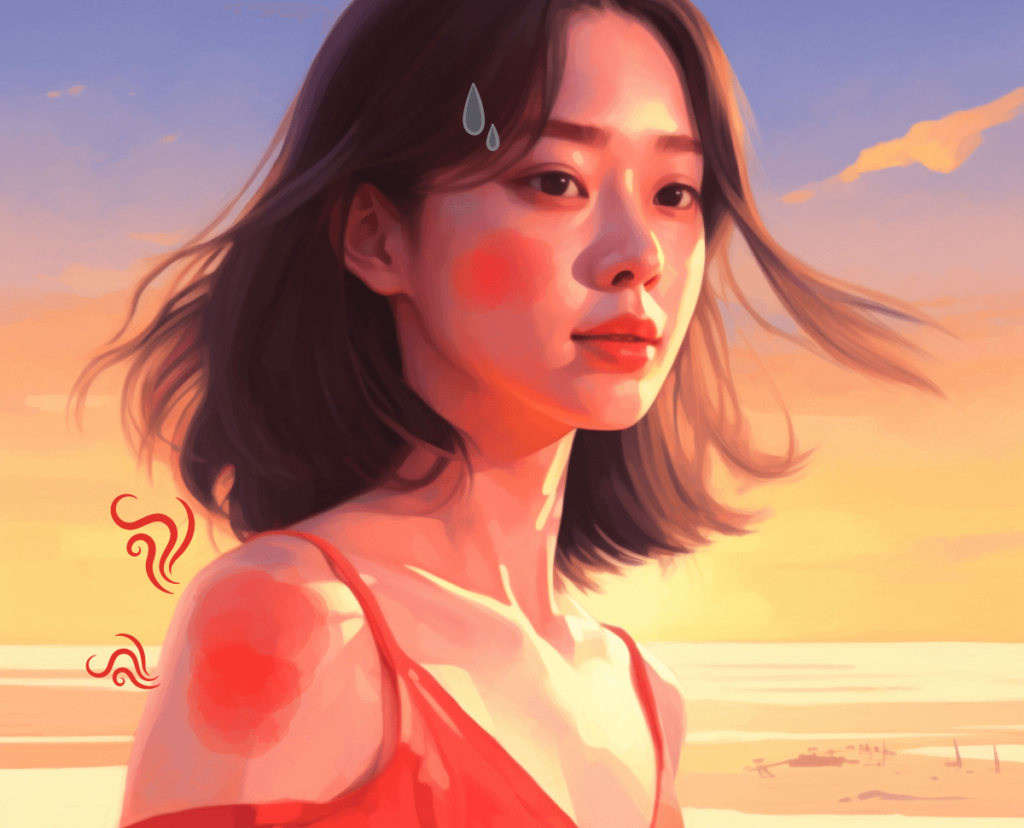
| Example: |
| 日焼け止めを取ってくれませんか。日焼けをしたくないので・・・ |
| Hiyakedome o totte kuremasenka. Hiyake o shitakunai node... |
| Could you pass me the sunscreen? I want to avoid getting a sunburn. |
ラムネ・Ramune | Japanese Soda
Finally, the last summer word for today is Ramune - ラムネ the Japanese soda, a carbonated soft drink widely popular in summer. It is said that the word comes from the borrowed English word lemonade. Recognized for its unique bottle design featuring a marble stopper in its neck, this beverage is a popular choice during summer festivals.
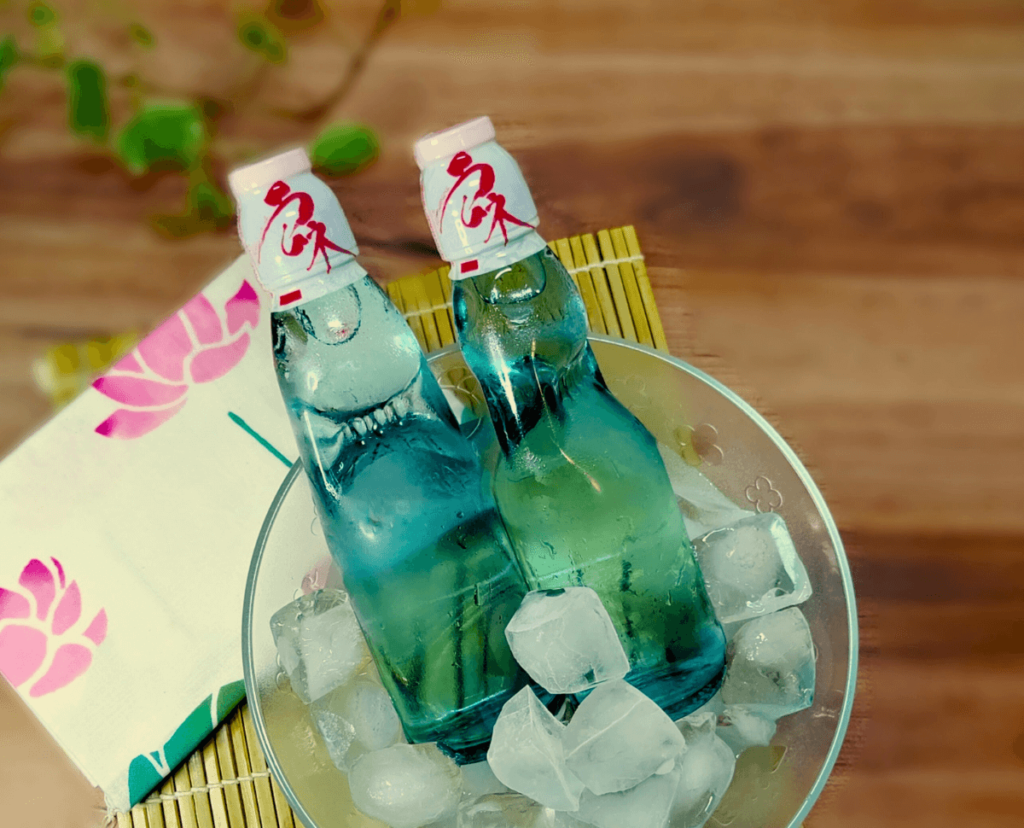
| Example: |
| 夏にはラムネのさわやかな味が最高です。 |
| Natsu niwa ramune no sawayaka na aji ga saiko- desu. |
| The refreshing taste of Ramune is the best during summer. |
Hope you have enjoyed learning useful Japanese words about Summer!

